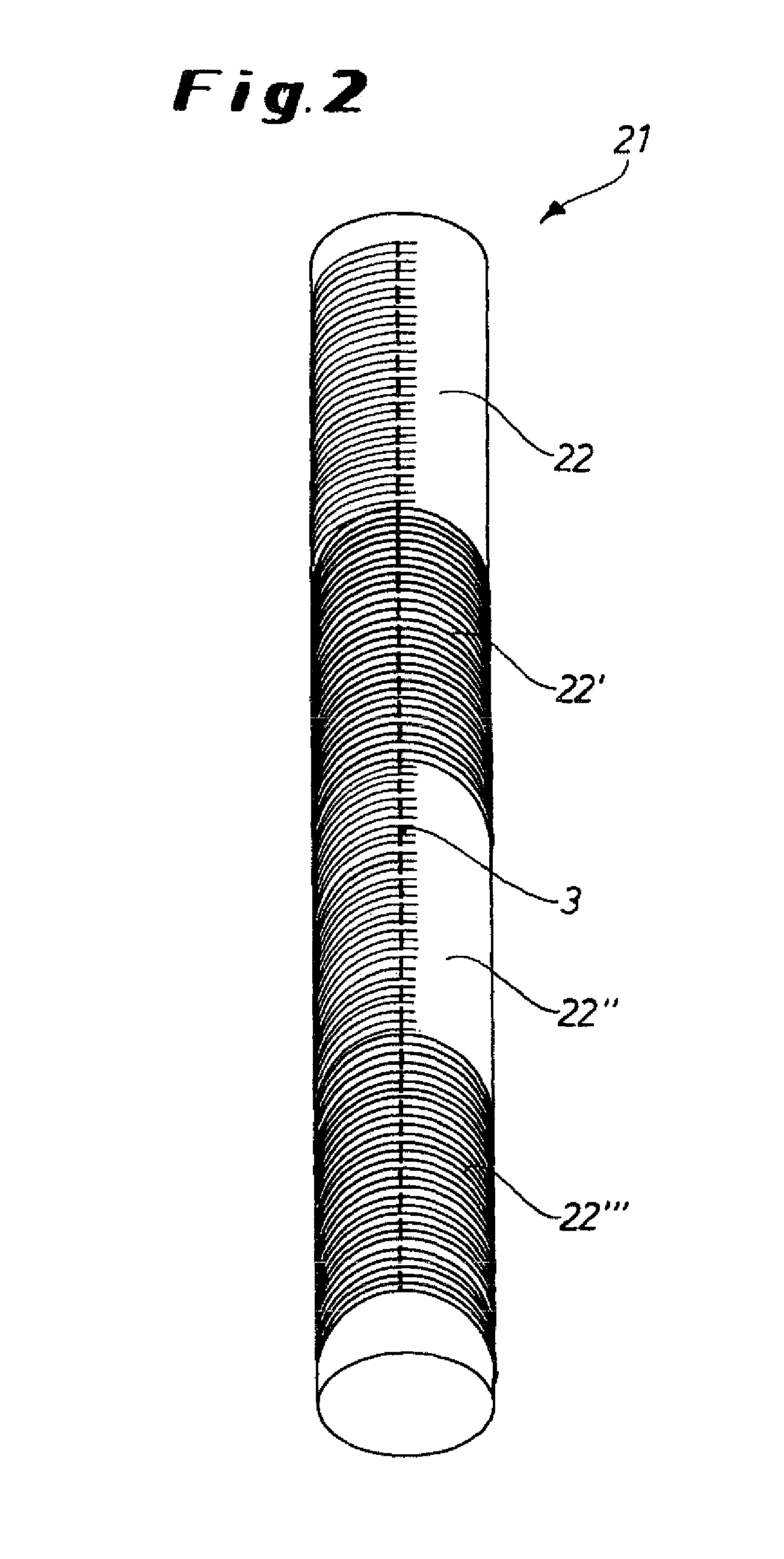Casting level measurement in a mold by means of a fiber optic measuring method
a fiber optic measuring method and level measurement technology, applied in the direction of manufacturing tools, instruments, machines/engines, etc., can solve the problems of increasing radiation protection laws, requiring expensive sources of radioactive materials, and affecting the simple maintenance work
- Summary
- Abstract
- Description
- Claims
- Application Information
AI Technical Summary
Benefits of technology
Problems solved by technology
Method used
Image
Examples
Embodiment Construction
[0046]FIG. 1a shows a specific embodiment of a sensor 11 of the invention. The sensor 11 is shaped basically like a rectangular solid that is rounded at the upper and lower ends. The sensor 11 has four grooves 4, each of which contains an optical waveguide (optical fiber) or a fiber optic sensor 2. The drawing also shows test points 3 at which the temperature can be determined. The sensor 11 can be installed, for example, in a groove in the side of a mold copper plate that faces away from the molten metal, so that the optical fibers 2 are oriented in the direction of the molten metal. The sensor 11 is installed in such a way that the optical fibers 2 are in direct contact with the copper plate and are arranged between the water-cooling system of the copper plate and the molten metal in the direction of the molten metal. The sensor 11 illustrated in the drawing can have other geometries as well, as long as it is suited for installation in a groove of a mold copper plate. The sensor o...
PUM
| Property | Measurement | Unit |
|---|---|---|
| Temperature | aaaaa | aaaaa |
| Shape | aaaaa | aaaaa |
| Height | aaaaa | aaaaa |
Abstract
Description
Claims
Application Information
 Login to View More
Login to View More - R&D
- Intellectual Property
- Life Sciences
- Materials
- Tech Scout
- Unparalleled Data Quality
- Higher Quality Content
- 60% Fewer Hallucinations
Browse by: Latest US Patents, China's latest patents, Technical Efficacy Thesaurus, Application Domain, Technology Topic, Popular Technical Reports.
© 2025 PatSnap. All rights reserved.Legal|Privacy policy|Modern Slavery Act Transparency Statement|Sitemap|About US| Contact US: help@patsnap.com



